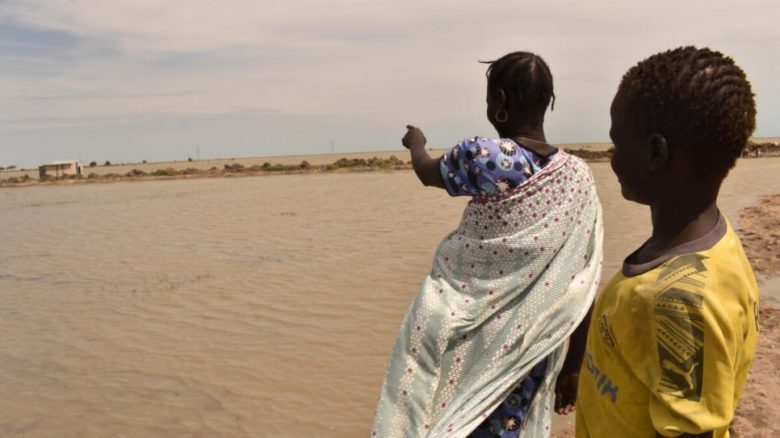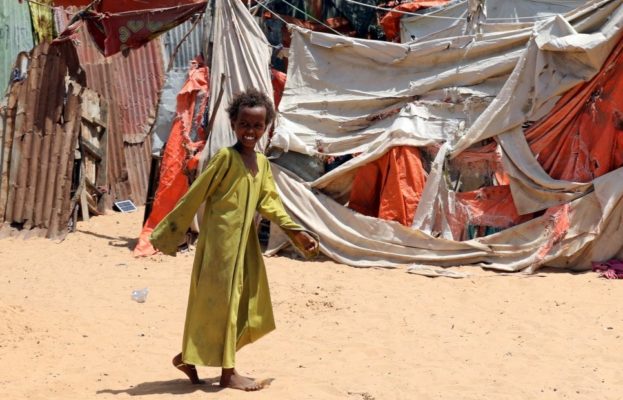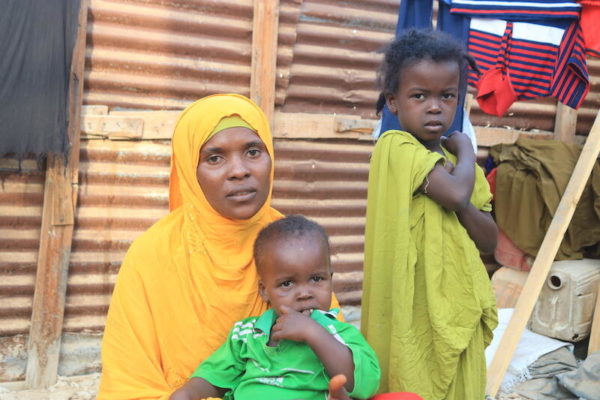
South Sudanese refugee Nyawiga Toch points at the location where her house was before Alganaa camp flooded.
© UNHCR/Sylvia Nabanoba
Months after opening, Alganaa refugee camp in Sudan’s White Nile State has been submerged by flood waters, leaving 35,000 South Sudanese refugees in need of urgent assistance.
By Sylvia Nabanoba in White Nile State, Sudan
Nyawiga Toch looks out over the water that covers Alganaa refugee camp in Sudan’s White Nile State. She can’t believe that barely a month ago, the camp was bustling with life.
oday, the small mud and papyrus houses that neatly crisscrossed its expanse and the shops that lined its boundaries are no more. The only remaining structures are three shops and some containers that were to be used as registration offices by UNHCR, the UN Refugee Agency.
The thirty-five-year-old mother of five and her husband were forced to leave their home in Fangak, South Sudan in May this year, after heavy rains destroyed their crops and home.
“We were left homeless and hungry,” she says.
Her family was among some 30,000 South Sudanese who fled across the border due to flooding, lack of food and insecurity. Alganaa was opened by UNHCR and Sudan’s Commission for Refugees (COR) in February of this year, becoming the tenth camp in White Nile state, which currently hosts over 280,000 South Sudanese refugees.
“We had a new home. Now, once more, we have nothing.”
In Alganaa, Nyawiga and her family set up their new home just before the rainy season came in July.
“At first, the water would dry up in a few days after the rain. Then, one day we woke up to find water flowing into the camp. It increased gradually, surrounding our houses, until we realized that we could no longer stay there,” Nyawiga explains.





